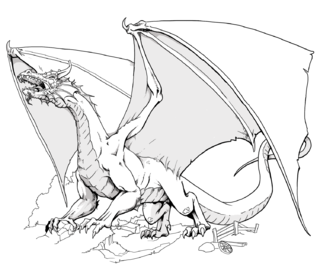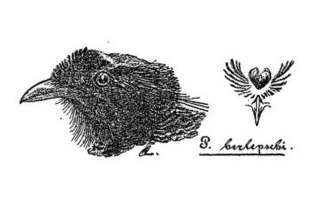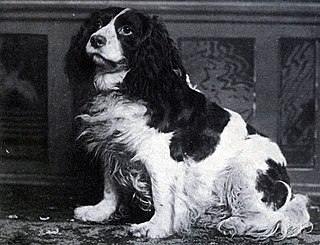
Koi, or more specifically nishikigoi, are colored varieties of carp that are kept for decorative purposes in outdoor koi ponds or water gardens.

Storyville was the red-light district of New Orleans, Louisiana, from 1897 to 1917. It was established by municipal ordinance under the New Orleans City Council, to regulate prostitution. Sidney Story, a city alderman, wrote guidelines and legislation to control prostitution within the city. The ordinance designated an area of the city in which prostitution, although still nominally illegal, was tolerated or regulated. The area was originally referred to as "The District", but its nickname, "Storyville", soon caught on, much to the chagrin of Alderman Story. It was bound by the streets of North Robertson, Iberville, Basin, and St. Louis Streets. It was located by a train station, making it a popular destination for travelers throughout the city, and became a centralized attraction in the heart of New Orleans. Only a few of its remnants are now visible. The neighborhood lies in Faubourg Tremé and the majority of the land was repurposed for public housing. It is well known for being the home of jazz musicians, most notably Louis Armstrong as a minor.

In the Dungeons & Dragons (D&D) fantasy role-playing game, dragons are an iconic type of monstrous creature. As a group, D&D dragons are loosely based on dragons from a wide range of fictional and mythological sources. Dungeons & Dragons allows players to fight the fictional dragons in the game and "slay their psychic dragons" as well. These dragons, specifically their "dungeon ecology", have implications for the literary theory of fantasy writing. D&D dragons also featured as targets of the moral panic surrounding the game.

A piebald or pied animal is one that has a pattern of unpigmented spots (white) on a pigmented background of hair, feathers or scales. Thus a piebald black and white dog is a black dog with white spots. The animal's skin under the white background is not pigmented.
The Trompowsky Attack is a chess opening that begins with the moves:
Hammarby Idrottsförening, commonly known as Hammarby IF or simply Hammarby, is a Swedish sports club located in Stockholm, with a number of member organizations active in a variety of different sports.

The Great Western Railway (GWR) 2301 Class or Dean Goods Class is a class of British 0-6-0 steam locomotives.

The bronze parotia, also known as the Foja parotia, Berlepsch's parotia or Berlepsch's six-wired bird-of-paradise, is a species of bird-of-paradise, in the family Paradisaeidae. It resembles and is often considered to be a subspecies of Carola's parotia, but a high majority of authorities support its specific status.

Salticus is a genus of the family Salticidae. Salticus is the type genus for the family Salticidae.

The Orpington or Buff Orpington Duck is a breed of domestic duck. It is a dual-purpose breed used for meat and egg production. It is capable of laying up to 220 eggs a year. Originally created by William Cook of Orpington, Kent, England, from the selection of mis-marked Blue Orpington Ducks; Cook was also the developer of the Orpington chicken. The breeds used in the development of the breed included Cayuga, Indian Runner, commercial Aylesbury and Rouen. It is proposed that Cook's intentions for the breed were to capitalize on the growing demand for the buff colour pattern. The Buff Orpington Duck was introduced to the public at the Dairy Show, the Agricultural Hall (q.v.), Islington, London in October 1897. It is considered a threatened breed by the ALBC. This breed was admitted to the British Poultry Standard in 1910 and the American Poultry Associations Standard of Perfection as the 'Buff Duck' in the Medium class in 1914. The Orpington duck is available in three colour varieties: Buff, Blond and Brown. The Buff Orpington is an unstable colour due to a blue dilution gene which means that from the offspring, all three colour variations will appear.

The Norfolk Spaniel or Shropshire Spaniel is an extinct breed of dog since the early 20th century. It was originally thought to have originated from the work of one of the Dukes of Norfolk, but this theory was disproven after being in doubt during the later part of the 19th century. The term was used to designate springer type spaniels that were neither Sussex nor Clumber Spaniels, and attempts were made to use it to specify a breed that would later become known as the English Springer Spaniel.

The Ringelmann scale is a scale for measuring the apparent density or opacity of smoke. It was developed by a French professor of agricultural engineering Maximilien Ringelmann of La Station d'Essais de Machines in Paris, who first specified the scale in 1888.

Hexadactilia trilobata is a moth of the family Pterophoridae described by Thomas Bainbrigge Fletcher in 1910. It is found in Australia in Queensland and New Guinea.

Christian Streit White was an American military officer, lawyer, court clerk, pisciculturist, and politician in the U.S. states of Virginia and West Virginia.
In loop quantum gravity theory, a Planck star is a hypothetical astronomical object, theorized as a compact, exotic star, that exists within a black hole's event horizon, created when the energy density of a collapsing star reaches the Planck energy density. Under these conditions, assuming gravity and spacetime are quantized, a repulsive "force" arises from Heisenberg's uncertainty principle. The accumulation of mass–energy inside the Planck star cannot collapse beyond this limit because it violates the uncertainty principle for spacetime itself.
HWB is a cylindrical-coordinate representation of points in an RGB color model, similar to HSL and HSV. It was developed by HSV’s creator Alvy Ray Smith in 1996 to address some of the issues with HSV. HWB was designed to be more intuitive for humans to use and slightly faster to compute. The first coordinate, H (Hue), is the same as the Hue coordinate in HSL and HSV. W and B stand for Whiteness and Blackness respectively and range from 0–100%. The mental model is that the user can pick a main hue and then “mix” it with white and/or black to produce the desired color.

The 1897 Army Cadets football team represented the United States Military Academy in the 1897 college football season. In their first season under head coach Herman Koehler, the Cadets compiled a 6–1–1 record and outscored their opponents by a combined total of 194 to 41. The Cadets suffered their only loss against Harvard by a 10 to 0 score and played Yale to a 6–6 tie. The Army–Navy Game was not played in 1897.

The Woman's Era was the first national newspaper published by and for black women in the United States. Originally established as a monthly Boston newspaper, it became distributed nationally in 1894 and ran until January 1897, with Josephine St. Pierre Ruffin as editor and publisher. The Woman's Era played an important role in the national African American women's club movement.

African Americans in Oklahoma or Black Oklahomans are residents of the state of Oklahoma who are of African American ancestry. African Americans have a rich history in Oklahoma. An estimated 7.8% of Oklahomans are Black as of the 2020 census, constituting 289,961 individuals.














